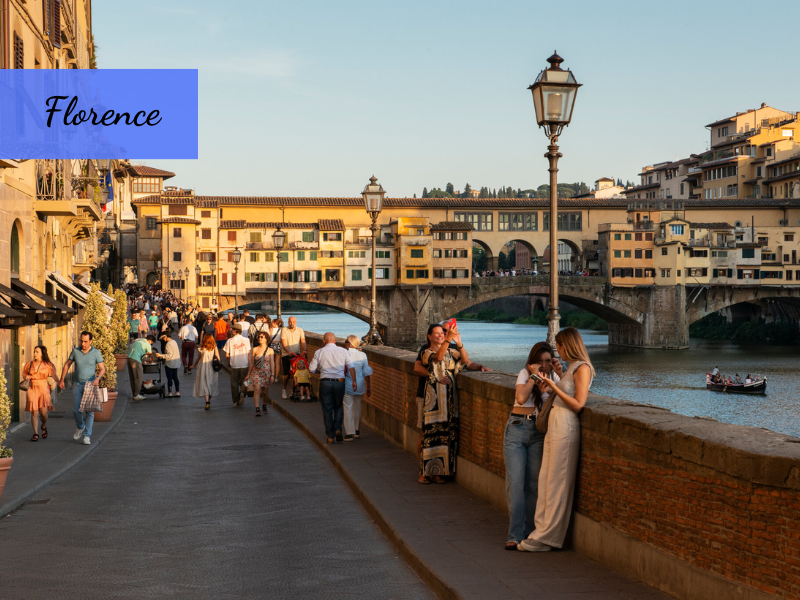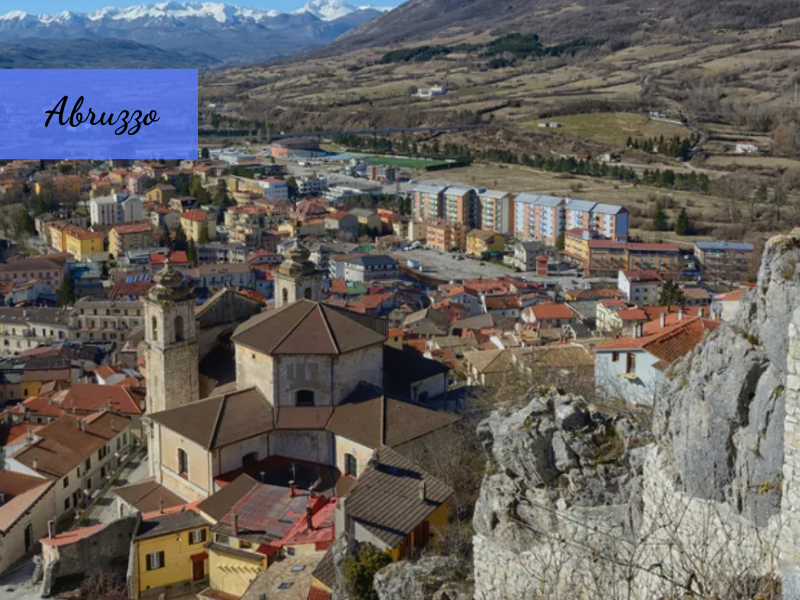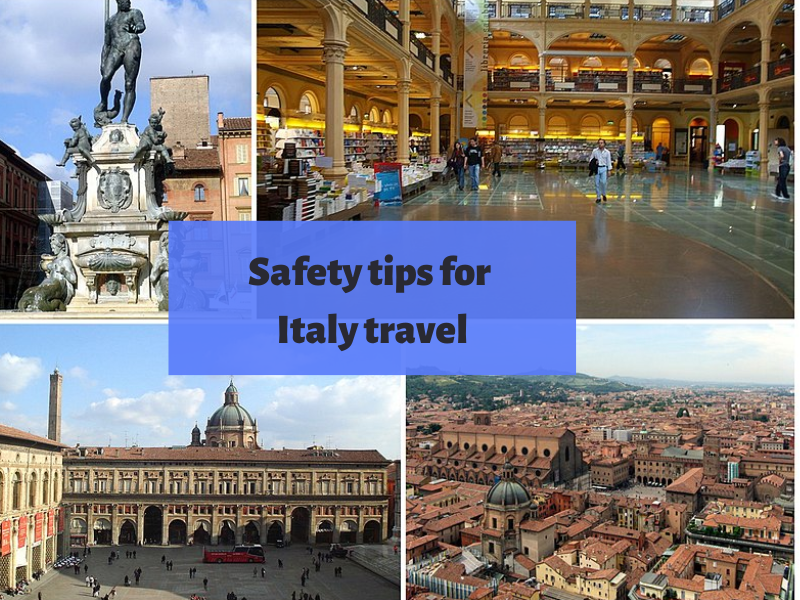Italy consistently ranks among the world’s safest countries according to the Global Peace Index, reflecting a strong sense of social safety, security, and low levels of ongoing conflict and militarization. However, the allure of Italy’s popular tourist destinations also brings about challenges, with pickpocketing and scams being prevalent, particularly at major attractions. In this article, I would like to share the safest places to live in Italy, spotlighting cities celebrated for their security and quality of life, offering you a comprehensive and accurate guide to finding a secure residence in this captivating country.
Related posts:
- The 5 best travel apps for Italy travel for IoS and Android
- Top 50 places to visit in Italy: A journey through Italy
- The 5 best sim card for Italy: A compete travelers guide
- The 5 best pocket wifi for Italy
- The 5 best eSIM for Italy travel
The 7 safest places to live in Italy
1. Milan
Mila is one of the safest places to live in Italy. Milan stands out as a beautiful city in northern Italy, renowned for its contributions to fashion, design, art, and architecture. As the second-largest city in Italy, Milan plays a significant role as one of the four engines of the European economy.
Milan offers its residents a high quality of life, driven by economic development, a commitment to sustainability, and increasing cultural and demographic diversity. The city is rich in cultural institutions, restaurants, and shops, featuring world-class museums and galleries such as the Pinacoteca Brera. Milan’s vibrant nightlife and excellent transport links, including three international airports and a high-speed train connecting to other Italian cities, add to its allure.
However, it’s essential to consider that the cost of living in Milan is relatively high, particularly when it comes to housing. Milan ranks fifth among the most expensive cities in Europe, with an average rental price of €1,800 per apartment, according to HousingAnywhere’s apartment rental index. Despite this financial aspect, Milan remains an enticing choice for those seeking a secure and culturally vibrant living experience.
2. Florence

Florence, often referred to as the pearl of Tuscany, emerges as both a cultural gem and one of the safest cities in Italy. With a population of around 380,000, including a notable 14% of foreigners, the city fosters a diverse and cosmopolitan atmosphere with a high level of English proficiency.
Florence’s economy is dynamic, driven by tourism, heavy industry, and manufacturing, particularly in areas like cuisine, leather goods, and high-end fashion. The city provides a high quality of life, bolstered by excellent transport links, including a sizable airport and efficient high-speed rail connections to other Italian cities.
While the cost of living in Florence can be relatively high, there are more budget-friendly options available outside the center. Average rental costs for various accommodations include 1,400 euros for a one-room apartment, 920 euros for a studio apartment, and 500 euros for a room. Despite potential expenses, Florence’s cultural richness, educational opportunities, and commitment to safety make it a compelling choice for those seeking a secure and vibrant living environment.
3. Turin
Turin, the first capital of Italy, ranks third on the safety list. Nestled in the northern province of Piedmont and surrounded by the Western Alps, Turin is known for its low crime rate, attributed in part to its popularity among Italian retirees seeking a lower cost of living and more comfortable temperatures than in the south. The city’s reduced tourist influx also contributes to its balanced crime rate.
The city has about 850,000 residents, including 14% expats attracted by the thriving technology and innovation sector. Turin boasts historic districts, palaces, squares, opera houses, and galleries, along with world-class universities and renowned sports teams like Juventus.
Turin offers a relatively low cost of living among major Italian cities, with a monthly rent for an apartment starting from 970 euros. The city’s commitment to safety is reflected in its high security levels, making it an appealing destination for residents and expatriates alike.
4. Abruzzo

As an individual seeking a peaceful and idyllic living environment, I find the Abruzzo region particularly appealing. Situated east of Rome, this area is a nature lover’s dream, with about one-third of its land covered by national parks. The stunning coastline along the Adriatic Sea adds to its charm, offering beautiful beaches.
Abruzzo’s reputation for olive oil production and winemaking aligns with my appreciation for local, authentic products. The diverse range of outdoor activities, including hiking, mountain climbing, and horseback riding, makes it an ideal destination for someone like me who enjoys an active lifestyle amid natural beauty.
The fact that Abruzzo is one of the most sparsely populated areas in Italy is a significant draw for me. I value the tranquility and peaceful atmosphere that come with less densely populated regions. Additionally, knowing that Abruzzo is considered the safest place to live in Italy adds an extra layer of appeal, assuring of a secure and serene living experience.
5. Apulia
Apulia, situated in the “heel” of Italy’s boot-shaped territory, holds significant appeal for me. The region’s reputation as the safest place to live in Italy, combined with a lower cost of living, makes it an attractive option for expatriates. The popular expat destinations within Apulia, including Ostuni, Itria Valley, Carovigno, Cisternino, and Alberobello, promise a diverse array of cultural experiences and scenic landscapes.
The culinary scene in Apulia further enhances its allure, with fresh produce available year-round and a thriving industry in olive oil, cheese, and wine production. This aligns perfectly with my interest in savoring quality, local food and beverages.
In summary, Apulia’s safety, affordability, pleasant weather, and rich culinary offerings make it a compelling choice for someone like me seeking the safest place to live in Italy – a place to call home.
6. Bologna

Bologna, situated in northern Italy, is celebrated for its historical architecture, rich cultural heritage, and outstanding cuisine. Bologna’s charm lies in its combination of historic allure and modern amenities, featuring Michelin-starred restaurants and a cyclist-friendly environment surrounded by scenic countryside. The city excels in various quality of life indicators, including income level, ease of doing business, safety, healthcare, and demographics.
The cost of living in Bologna is relatively affordable compared to other major Italian cities, with rental options averaging around 900-1000 euros per month. Food and public transport costs are also reasonable.
Notably, Bologna is considered one of the safest places to live in Italy, characterized by a low violent crime rate, although petty crimes like pickpocketing may occur, typical of urban areas. Overall, Bologna stands as a secure and captivating city, offering residents a high quality of life.
7. Bolzano
Bolzano, the multicultural capital of the province of South Tyrol in northern Italy, is renowned for its picturesque setting in the Italian Alps and a well-preserved historic center featuring Gothic architecture. The city uniquely blends Italian and Austrian cultures, reflected in attractions like the Cathedral of Santa Maria Assunta, the Castle of Marecchia, and the South Tyrolean Archaeological Museum, home to the famous Ötzi Iceman.
Bolzano is known for its outstanding healthcare system, quality education, and good transport links through the train station and nearby airports. However, it is considered one of the most expensive cities in Italy, particularly in terms of housing, with an average monthly rent for an apartment exceeding 1,300 euros.
Certainly, despite its relatively high cost, Bolzano is highly regarded as one of the safest places to live in Italy, boasting a low crime rate. This factor significantly contributes to the city’s appeal, making it a desirable and secure residential destination for those seeking a tranquil and safe living environment.
Safety tips for Italy travel

Certainly! Here are safety tips for traveling in Italy, from the perspective of the traveler:
- Learn basic Italian phrases: I find it beneficial to learn essential Italian phrases. It not only enhances my travel experience but proves valuable in emergencies or when seeking assistance in less touristy areas.
- Wear anti-theft gear: I prioritize safety by wearing anti-theft accessories like a money belt or neck pouch to keep my valuables secure, especially in crowded places or public transport.
- Get an eSIM Card or local SIM: To stay connected and ensure I have a reliable means of communication, I use an Italy eSIM from Esimwise. This ensures I can navigate, maintain a stable connectivity, and stay in touch even in less touristy areas.
- Dress modestly in religious sites: When visiting churches and religious sites, I adhere to dress codes by covering my shoulders and knees. Respecting local customs is important for a smoother and more respectful experience.
- Pack weather-appropriate clothing: Being prepared for Italy’s unpredictable weather with layers and checking forecasts regularly ensures I stay comfortable and safe during sudden changes.
- Choose sturdy footwear: Exploring Italy’s cobblestone streets can be challenging, so I make sure to wear comfortable and sturdy footwear to navigate the historic districts with ease.
- Explore local markets with caution: While enjoying the vibrant markets, I remain vigilant against pickpocketing. I keep my belongings secure and avoid displaying expensive items to minimize the risk of theft.
- Opt for local eateries: To savor authentic Italian cuisine and minimize the risk of scams, I choose local restaurants away from the touristy spots.
- Exercise caution at night: When exploring less crowded districts at night, I stick to well-lit areas to ensure a secure nighttime experience, especially in cities like Rome and Naples.
- Stay informed: I stay updated on local news and safety advisories, remaining aware of my surroundings to enhance overall safety during my travels.
FAQs
1. Which part of Italy is the safest?
Determining the safest part of Italy involves considering various factors, and perceptions of safety can vary among individuals. However, regions in northern Italy, such as Trentino-Alto Adige and Veneto, are often praised for their relatively low crime rates and high quality of life. Cities like Bolzano and Treviso within these regions have earned reputations for safety. Additionally, areas with smaller communities or rural settings are generally perceived as secure.
2. Which city in Italy has the lowest crime rate?
It’s challenging to definitively state which city in Italy has the absolute lowest crime rate, as crime rates can change over time and can vary within different neighborhoods of a city. However, some cities in Italy are often praised for having relatively low crime rates, and these include cities like Treviso, Bolzano, Parma, Savona, and Ferrara. For the most up-to-date and accurate information, it is recommended to consult recent crime reports and local law enforcement sources for the specific city you are interested in.
3. How safe is living in Italy?
Italy is widely considered a safe and welcoming country for residents. With a generally low crime rate, residents often enjoy a high quality of life. However, it’s essential to be mindful of regional variations, as larger cities may present different safety considerations than smaller communities. While petty crimes like pickpocketing can occur, especially in tourist-heavy areas, serious violent crimes are relatively rare. Embracing local safety norms, staying informed about one’s surroundings, and cultivating a sense of community contribute to a positive and secure living experience in Italy.
Wrap up
Starting a journey or considering a new life in the inviting Mediterranean region, Italy stands out as an ideal choice for expats. So from my suggestion, have you found the safest places to live in Italy? Whether drawn to the cosmopolitan allure of Milan, the artistic beauty of Florence, or the alpine charm of Turin, Italy offers a diverse array of cities to match the aspirations of every traveler.
However, amidst the excitement of planning such a significant move, it’s essential to prioritize a seamless connection to navigate unforeseen expenses and situations during the journey.To ensure an unlimited and stable connection, expats can opt for an Italy eSIM from trusted providers like Esimwise, facilitating a smooth transition and enhancing the overall experience of starting anew in the warmth and cultural richness of Italy.
















